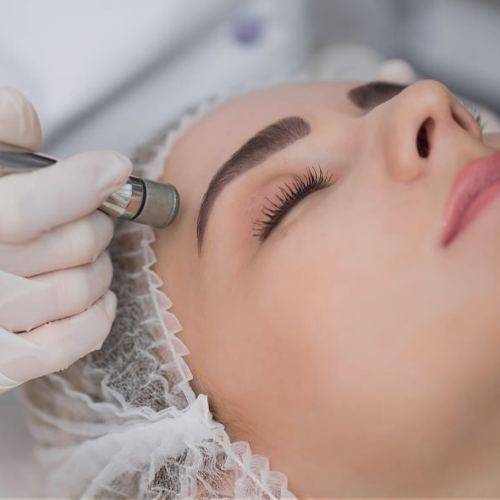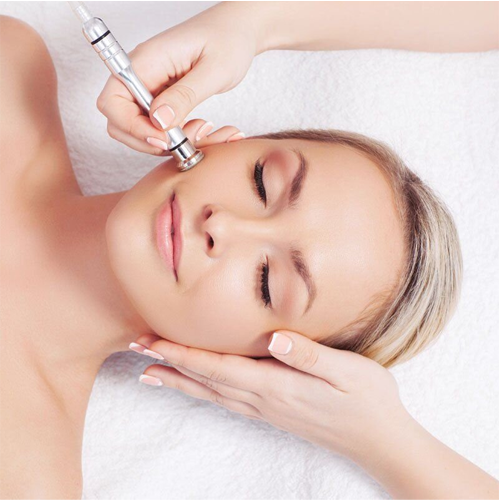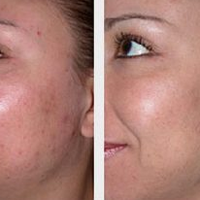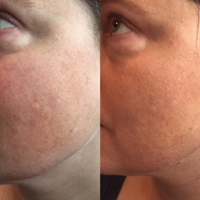Service
MICRODERMABRAISON
Best Microdermabraison Treatment in Islamabad
Microdermabrasion is a cosmetic procedure. It involves a skin care specialist removing the top layer of skin with a small hand-held device.
Microdermabrasion is considered a safe procedure for most skin types and colors. People might choose to get the procedure if they have the following skin concerns:
- Fine lines and wrinkles
- Hyperpigmentation, age spots and brown spots
- Enlarged pores and blackheads
- Acne and acne scars
- Stretch marks
- Dull-looking skin complexion
- Uneven skin tone and texture
- Melasma
- Sun damage
How does Dermabraison Treatment work?
Microdermabrasion is an in-office procedure that usually takes about one hour. It’s typically performed by a licensed skincare professional, who may or may not be under the supervision of a healthcare provider. This depends on what state you live in. It’s not necessary to use anesthesia or a numbing agent for microdermabrasion.
During your appointment, you’ll be seated in a reclining chair. Your provider will use a handheld device to gently spray on the particles or sand away the outer layer of skin in the targeted areas. At the end of the treatment, a moisturizer as well as sunscreen will be applied to your skin.
Microdermabrasion was first approved by the U.S. Food and Drug Administration in 1996. Since then, hundreds of microdermabrasion devices have been produced.


How does Dermabraison Treatment work?
Microdermabrasion is an in-office procedure that usually takes about one hour. It’s typically performed by a licensed skincare professional, who may or may not be under the supervision of a healthcare provider. This depends on what state you live in. It’s not necessary to use anesthesia or a numbing agent for microdermabrasion.
During your appointment, you’ll be seated in a reclining chair. Your provider will use a handheld device to gently spray on the particles or sand away the outer layer of skin in the targeted areas. At the end of the treatment, a moisturizer as well as sunscreen will be applied to your skin.
Microdermabrasion was first approved by the U.S. Food and Drug Administration in 1996. Since then, hundreds of microdermabrasion devices have been produced.

Who should consider microdermabrasion?
Microdermabrasion is somewhat useful for people with dull or sallow skin, mild acne, acne discoloration, pick marks, and very superficial acne scars. Microdermabrasion may be a good treatment option for patients with superficial skin problems and busy lifestyles who are looking for minimal benefits with virtually no side effects or downtime. Individuals with deeper acne scars may expect a much longer series of treatments or likely benefit from physician-performed surgical dermabrasion, chemical peeling or laser resurfacing.

Who should consider microdermabrasion?
Microdermabrasion is somewhat useful for people with dull or sallow skin, mild acne, acne discoloration, pick marks, and very superficial acne scars. Microdermabrasion may be a good treatment option for patients with superficial skin problems and busy lifestyles who are looking for minimal benefits with virtually no side effects or downtime. Individuals with deeper acne scars may expect a much longer series of treatments or likely benefit from physician-performed surgical dermabrasion, chemical peeling or laser resurfacing.
Why Microdermabraison Treatment ?
Smoother, Brigher , Fresh-Looking Skin
By sloughing off dead skin cells and the dull top layer of skin, you can reasonably expect to see dramatic changes in your skin’s texture, tone, and color after one session.
Lunch-Time Facial
For busy women and men, a microdermabrasion facial has other benefits in addition to aesthetic ones. one session takes a mere 30 minutes.
MICRODERMABRAISON TREATMENT VIDEOS
Microdermbraison Treatment






FAQs
What ages are appropriate for microdermabrasion?
How often can I have microdermabrasion?
Microdermabrasion can be done as frequently as weekly or up to every eight weeks depending on your skin’s tolerance and desired cosmetic effects. Many people choose to start with weekly treatments for three sessions, then change to a monthly maintenance regimen.

